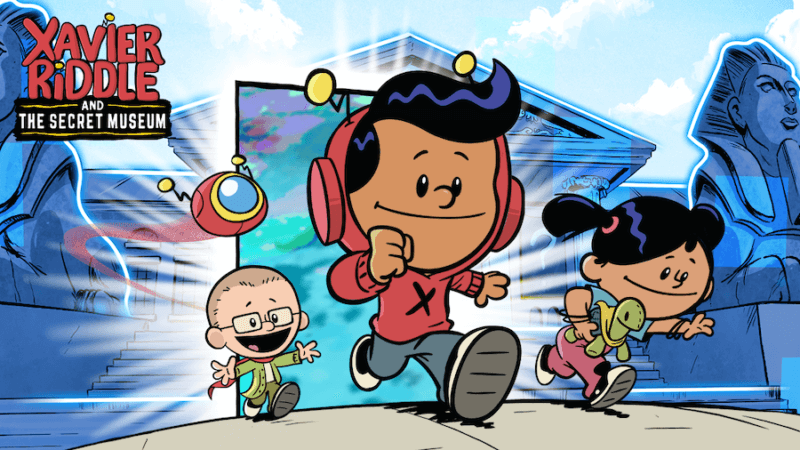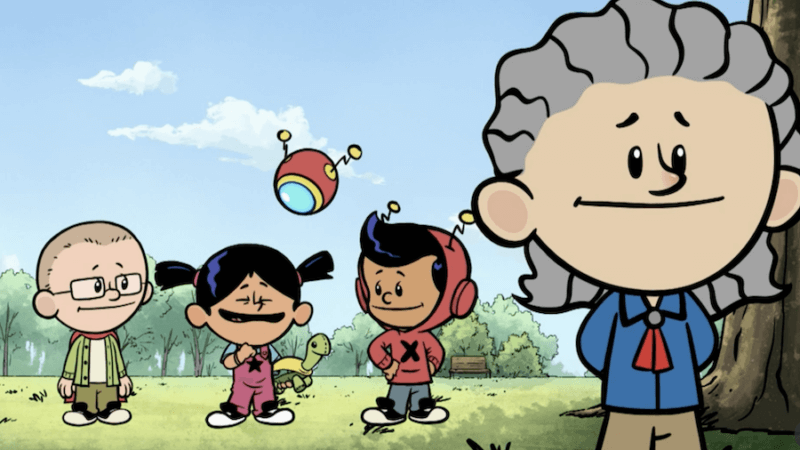Autism Awareness Month: Interview with Children’s TV Writer Charles Johnston
2023 marks the third year of our series of interviews for Autism Awareness Month, where we speak with those who have made stories and characters in animation that have reflected the experiences of autistic people as well as those on the spectrum themselves who have gone on to create some truly unique pieces of work that many have fell in love with on a global scale.
One of the people who have joined us for this year’s celebration is Charles Johnston, an Emmy award-winning writer in children’s television whose credits include Paw Patrol, Odd Squad, and Detentionaire. But he was also part of the writing team behind Xavier Riddle and the Secret Museum, where he wrote a special episode on a particularly important figure.
Before becoming an Emmy award-winning writer, how did you start your career in children’s television?
My very first writing job was at the Canadian Broadcasting Corporation (CBC) writing for two hosts (and a couple of sock puppets) who introduced television programs aimed at preschool kids in the morning. After that, there was just so much work in children’s TV animation where I lived in Toronto (they made Paw Patrol here!) that over the years it turned into a speciality.
While US readers may be familiar with Xavier Riddle and the Secret Museum on PBS Kids, could you explain in your own words what the show is about for those who may not have seen it?
Xavier Riddle and the Secret Museum is about three kids – Xavier, Yadina, and Brad – who have access to a time machine. They use it to visit the past in every episode and have playdates with historical figures back when they were kids. On every outing, they learn a lesson from who they meet. They take that lesson back to the present to solve a problem one is facing, like learning how to stand up for others or get better at playing an instrument. This way, in each episode, a world-changing individual is introduced to a new generation. And if they could grow up to change the world, anyone can, because these renowned heroes were once kids, too.
And how did you get involved as one of the writers on the show?
I knew a producer named Tanya Green who helped develop the show and she suggested I’d be a good fit. And Meghan Read, the amazing head writer, agreed to hire me. We’d worked together previously on a show called Dot. We creatively clicked and enjoyed working together.
You’ve written about several key historical figures for Xavier Riddle, including Florence Nightingale, Leonardo da Vinci, and Ella Fitzgerald. How did you become involved with writing the episode on Temple Grandin, an autistic professor and speaker on autism and the behaviour of animals?
The short answer is I lucked out! If I remember correctly, I actually asked the head writer if I could do it. I took part in story summits where we would figure out stories to go along with already approved subjects. Meghan said to let her know if we felt a connection to any particular one. My mom had recently recommended the movie Temple Grandin to me and I honestly thought she’d be proud if I told her I was working on an episode about Grandin.
What were the biggest challenges when writing about Temple Grandin and Ben, the other autistic character featured in the same episode?
I knew I had the sensitivity to approach both characters but what I lacked was knowledge about autism and how to phrase everything appropriately when talking about the subject. I had quite a bit to learn there.
How much did you learn about autism during the writing process and what was your biggest takeaway from the experience?
We worked directly with Temple Grandin and also had a consulting firm help us with the subject of autism. It proved not only helpful but enlightening. I remember one time phrasing something in a first draft where I said that “an autistic person may do something that a non-autistic person might find odd” and the consultants advised me to tweak the wording to “an autistic person may do something that a non-autistic person had never thought of before.” I found these kinds of insights profound. Sometimes we get hung up on being tolerant instead of just being appreciative. We should be thankful that everyone thinks and sees the world differently.
Did you know how Temple Grandin herself thought about the episode with both her portrayal and how autism was represented?
I heard she was pleased. She agreed to let us profile her if she could weigh in at every stage of the process. We pitched her a few scenarios, but she insisted she just wanted to teach kids how to make and fly a kite. It all fell into place so elegantly. It was like she was ten steps ahead of us in how she saw what the episode could be, which of course is rather apt. Everyone involved with the show loved how the episode turned out. It’s definitely one of my favourites.
Last year, ‘I am Temple Grandin’ was nominated for a WGC (Writers Guild of Canada Screenwriting) Award in the Children’s Category, competing with major titles like The Snoopy Show. What was it like to have your work on this particular episode recognised by the guild?
It was an honour. It was also nominated for a Canadian Screen Award the same year. I was proud of being rewarded for exploring new ground. I was especially delighted that through this kind of recognition, we could reach more people with the episode’s message: that everyone thinks differently. That’s the only way that innovations can happen.





